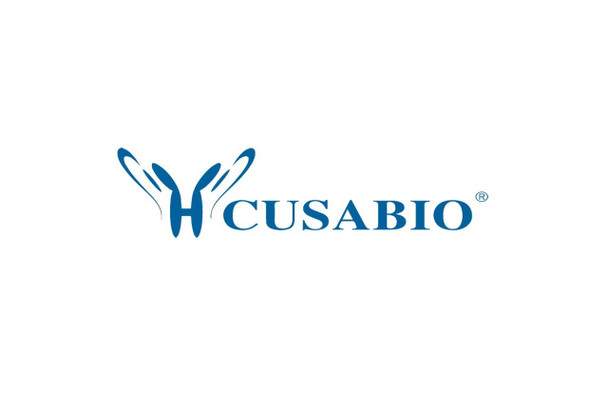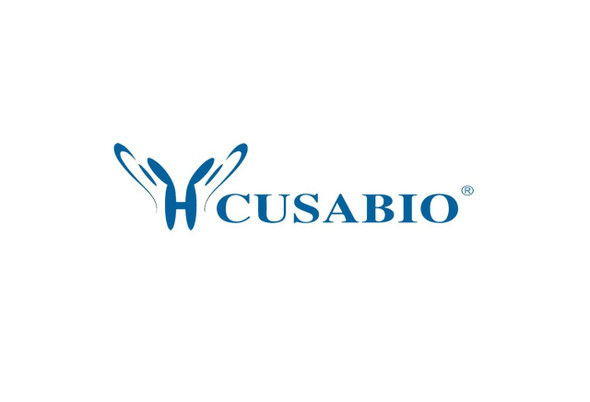Cusabio Human Recombinants
Recombinant Human CCR4-NOT transcription complex subunit 8 (CNOT8) | CSB-EP871398HU
- SKU:
- CSB-EP871398HU
- Availability:
- 13 - 23 Working Days
Description
Recombinant Human CCR4-NOT transcription complex subunit 8 (CNOT8) | CSB-EP871398HU | Cusabio
Alternative Name(s): CAF1-like protein
Gene Names: CNOT8
Research Areas: Epigenetics and Nuclear Signaling
Organism: Homo sapiens (Human)
AA Sequence: MPAALVENSQVICEVWASNLEEEMRKIREIVLSYSYIAMDTEFPGVVVRPIGEFRSSIDYQYQLLRCNVDLLKIIQLGLTFTNEKGEYPSGINTWQFNFKFNLTEDMYSQDSIDLLANSGLQFQKHEEEGIDTLHFAELLMTSGVVLCDNVKWLSFHSGYDFGYMVKLLTDSRLPEEEHEFFHILNLFFPSIYDVKYLMKSCKNLKGGLQEVADQLDLQRIGRQHQAGSDSLLTGMAFFRMKELFFEDSIDDAKYCGRLYGLGTGVAQKQNEDVDSAQEKMSILAIINNMQQ
Source: E.coli
Tag Info: N-terminal GST-tagged
Expression Region: 1-292aa
Sequence Info: Full Length
MW: 60.5 kDa
Purity: Greater than 90% as determined by SDS-PAGE.
Relevance: Has 3'-5' poly(A) exoribonuclease activity for synthetic poly(A) RNA substrate. Its function seems to be partially redundant with that of CNOT7. Catalytic component of the CCR4-NOT complex which is linked to various cellular processes including bulk mRNA degradation, miRNA-mediated repression, translational repression during translational initiation and general transcription regulation. During miRNA-mediated repression the complex seems also to act as translational repressor during translational initiation. Additional complex functions may be a consequence of its influence on mRNA expression. Associates with members of the BTG family such as TOB1 and BTG2 and is required for their anti-proliferative activity.
Reference: "The human POP2 gene: identification, sequencing, and mapping to the critical region of the 5q- syndrome." Fidler C., Wainscoat J.S., Boultwood J. Genomics 56:134-136(1999)
Storage: The shelf life is related to many factors, storage state, buffer ingredients, storage temperature and the stability of the protein itself. Generally, the shelf life of liquid form is 6 months at -20?/-80?. The shelf life of lyophilized form is 12 months at -20?/-80?.
Notes: Repeated freezing and thawing is not recommended. Store working aliquots at 4? for up to one week.
Function: Has 3'-5' poly(A) exoribonuclease activity for synthetic poly(A) RNA substrate. Its function seems to be partially redundant with that of CNOT7. Catalytic component of the CCR4-NOT complex which is linked to various cellular processes including bulk mRNA degradation, miRNA-mediated repression, translational repression during translational initiation and general transcription regulation. During miRNA-mediated repression the complex seems also to act as translational repressor during translational initiation. Additional complex functions may be a consequence of its influence on mRNA expression. Associates with members of the BTG family such as TOB1 and BTG2 and is required for their anti-proliferative activity.
Involvement in disease:
Subcellular Location: Cytoplasm, Nucleus
Protein Families: CAF1 family
Tissue Specificity:
Paythway:
Form: Liquid or Lyophilized powder
Buffer: If the delivery form is liquid, the default storage buffer is Tris/PBS-based buffer, 5%-50% glycerol. If the delivery form is lyophilized powder, the buffer before lyophilization is Tris/PBS-based buffer, 6% Trehalose, pH 8.0.
Reconstitution: We recommend that this vial be briefly centrifuged prior to opening to bring the contents to the bottom. Please reconstitute protein in deionized sterile water to a concentration of 0.1-1.0 mg/mL.We recommend to add 5-50% of glycerol (final concentration) and aliquot for long-term storage at -20?/-80?. Our default final concentration of glycerol is 50%. Customers could use it as reference.
Uniprot ID: Q9UFF9
HGNC Database Link: HGNC
UniGene Database Link: UniGene
KEGG Database Link: KEGG
STRING Database Link: STRING
OMIM Database Link: OMIM









